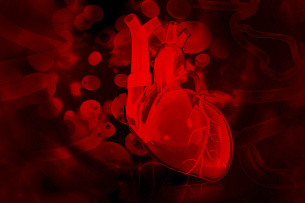Cardiovascular diseases take the infamous number one place as a cause of death in humans. Personalized cell therapies hold the hope of increasing the curability of heart diseases.
 Old society
Old society
Highly developed societies have of face environmental pollution that increases the incidence of civilization diseases. For the aging societies of Europe and the USA, regenerative medicine is an obvious solution resulting from the need to improve the quality of life.
Some formulas for the use of stem cells have permanently entered conventional medicine and are successfully used to rebuild the hematopoietic system via bone marrow transplantation. Other applications, e.g. in heart diseases, neurodegenerative diseases or in orthopedics, are still being developed.
In Poland, approximately 100,000 new cases of heart attacks are estimated each year. In spite of the network of anti-infarction units that quickly clear the coronary vessel, a significant percentage of post-infarction patients show impaired systolic function of the heart.
The consequence of this is often professional inactivity and limited prospects of curing the disease.
New perspectives
In 2002, the team led by prof. Maciej Kurpisz, in cooperation with Poznań cardiologists, performed the world’s second largest autologous stem cells / progenitor skeletal muscles (so-called myoblasts) implantation into the patient’s heart. The stem cells were then delivered to the heart through a coronary vein using an endoscope. This pioneering clinical trial has been published under the name POZNAN TRIAL. This novel approach resulted in the rapid spread of clinical trials using cells under the intramiocardial endoscopy technique.
Space for improvement
However, there were some side effects of the procedures used, including persistent arrhythmias repeated over a period of several months after myoblast implantation. Side effects were the result of the fact that the administered skeletal muscle stem cells differed in their properties from cardiomyocytes in the heart, including the lack of connexin 43 – a protein responsible for the construction of the so-called intercellular gap junctions that determine proper communication between heart cells. This is where an area for research was created by geneticists from the Institute of Human Genetics, PAS, who took steps to obtain the effect of “production” of connexin 43 in skeletal muscle myoblasts. After conducting many basic and preclinical studies with the use of an animal model of myocardial infarction damaged, a phase I clinical trial was undertaken. A clinical trial consisted of administering genetically modified human myoblasts to a group of patients with ischemic cardiomyopathy. This attempt was successful in improving myocardial function and eliminating arrhythmias. Moreover, cellular implantation improved the ejection fraction of the heart by approx. 5-7%. Cellular therapies for non-renewing organs (pancreas, heart, central nervous system) offer hope for the cure of diseases. In terms of the post-infarction muscle, it will be possible to think in the future about the repopulation of post-infarction defects, with new own cardiomyocytes obtained thanks to cell bioengineering and genetic modification.